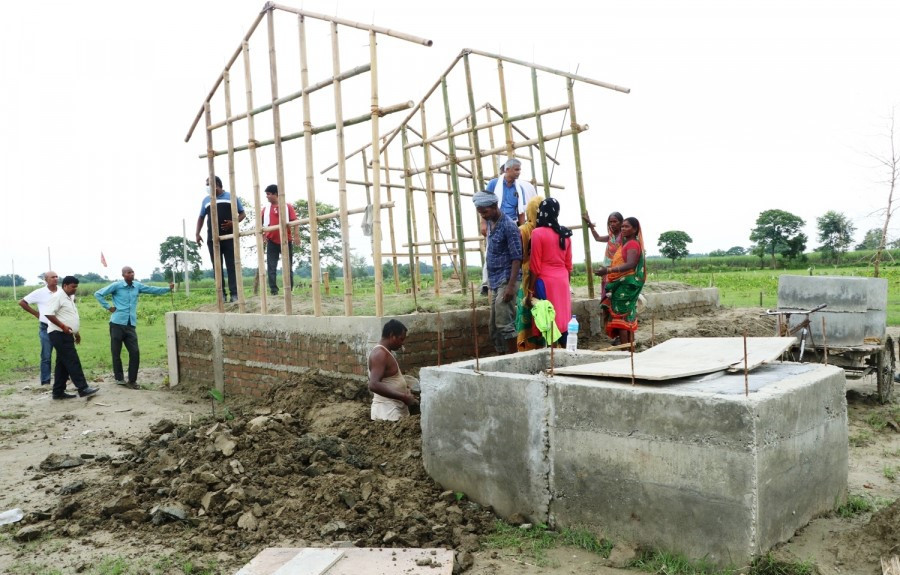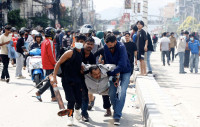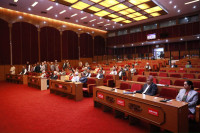Columns
Local approaches to ending landlessness
Many commissions were formed in the past to resolve the issue, but none could offer a reasonable solution.
Jagat Deuja
Landlessness is deeply entrenched in the centuries-old feudal land administration in Nepal. Feudalistic segregation led to sociocultural discrimination and economic disparities, resulting in skewed land ownership patterns and excluding women, ethnic minorities and Dalits. The appalling disparity in land ownership patterns prompted reforms in the early 1950s. However, a lack of political will and oversight to fulfil the commitment to land reform left most landless people without their rights.
What’s more, there was no comprehensive definition of landless people. The legal definition is found only in the Land Reform Act 8th Amendment 2019, and that too is insufficient. According to the amendment, “People who have no registered land at all in the family members’ ownership and also do not have capacity to purchase even the homestead land” are defined as landless. This definition barely scratches the surface of landlessness in Nepal’s context and invites subjective evaluations that limit the identification of landless people. At the practical level, landlessness is diverse. For instance, people have land but not enough even for housing (less than 130 square metres). Additionally, they cannot use the land because of recurrent flooding, landslide or other natural disasters, turning them landless.
The issue of landlessness is thus ill-defined and inadequately understood when it comes to formulating policies and implementing actions to address it. Landlessness cannot be understood only in terms of land ownership or its lack thereof. As such, it is pertinent to set clear and contextualised indicators rather than a general definition that does not do justice to many problems connected with landlessness or functional landlessness.
Multiplier effects
Around 1.3 million Nepali households are landless and informal settlers. According to the Land Issues Resolving Commission (LIRC), 251,766 landless and 932,801 informal families submitted applications to the commission. In recent years, natural disasters have added much to the increasing number of landless people. Despite the lack of nationwide data, Nepal's vulnerability and landlessness go hand in hand. The landless and small land-holding farmers are more vulnerable to the impacts of disasters, especially floods, as they are more likely to lose their limited arable land, perpetuating the cycle. In such a case, the government and other stakeholders must rethink their efforts and strategies to address the long-standing landlessness issue.
Landless and functionally landless people often live in public and otherwise insecure areas and are exposed to and threatened by others who have more power in society. Only formally the registered land comes into the jurisdiction of the land administration system. Legal land ownership is required to claim many governments and other financial institutions’ services and to get humanitarian support in some cases. As a result, these households often do not have access to governmental services and benefits—landlessness impacts individual rights to food, housing, water, health, work and broader social stability and economic development.
Government efforts
The Constitution of Nepal 2015 enshrines property rights, equal inheritance rights for women, equal rights of spouses to household property, land rights for Dalits and access to areas for small-scale farmers. The National Land Policy of 2019 is a progressive legislation that sets a solid base for the land rights of landless families. The Lands Act of 1964 8th Amendment recognises the land rights of landless and informal settlers. The revised act covers women's and vulnerable groups' land rights, including rehabilitation of the landless, squatters and informal tenure-holders. These new laws and policies allow for the formalisation of the land rights of landless and informal settlers. It is essential to work on translating these pro-people policy provisions on the ground by facilitating their effective implementation. If effectively implemented, these new laws can potentially create breakthrough historic socio-economic change across Nepal.
Locally led approach
Many commissions were formed in the past to resolve the issue, but they failed to solve it reasonably. Even though there are no in-depth studies regarding the failure, creating a commission at the centre and a committee in the district and asking for applications from the landless through public notice was fundamentally wrong. The real landless faced difficulties filing applications at the district headquarters.
As the Land Act prescribes, local governments have a full right to identification, validation and recordation (IVR) of the landless. They should send trained enumerators to the household or community levels for this. The local government council should endorse the final list of landless people prepared through a rigorous process involving elected representatives, political parties and civil society organisation representatives. Local governments and communities can quickly identify the landless and facilitate proper land allocation. So local governments have a great opportunity to resolve the problem of landlessness by investing on resources to enhance their capacity for land governance. A local, grassroots-level approach could be of high importance to efficiently address the issue of landlessness. One core benefit of such an approach is it brings the landless people into the process of addressing the challenge of landlessness. Also, the role of CSOs becomes crucial to educate the landless and support the local government.
Now is the prime time for the institutionalisation of the land rights of vulnerable communities to push for the implementation of the existing progressive legal and policy provision. There should be bigger mobilisation and support from every corner to resolve long hanging these structural issues rather than criticised from the side.
Land ownership pattern continues to determine the life changes of individuals and families. While the economic aspects of production and access are much more evident, social realities such as class, caste and gender-based inequality are further aggravated when mostly men from particular classes and statuses predominantly own the most productive land resources. Thus, in context of the aforementioned situation of landless in Nepal, what Margaret Mitchell wrote in 1936 concerning land still resounds true "Land is the only thing in the world that amounts to anything, for it's the only thing in this world that lasts. It's the only thing worth working for, worth fighting for…."




 11.12°C Kathmandu
11.12°C Kathmandu















